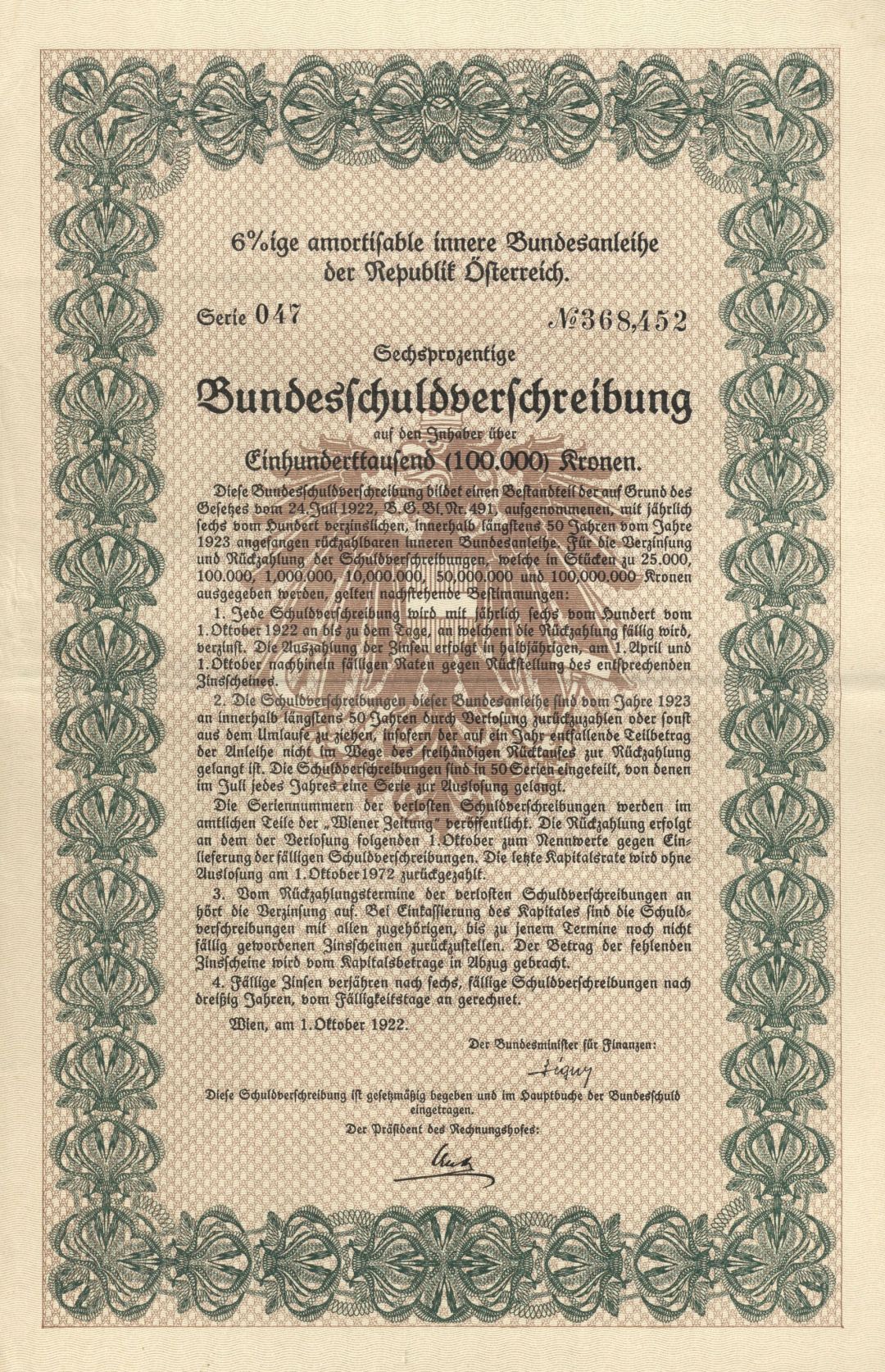Austrian Bond - 1922 dated 100,000 Austrian Kronen
Inv# FB6212 Bond100,000 Kronen 6% Bond with 16 of 20 coupons attached. The Krone (pl. Kronen) was the currency of Austria (then known as German-Austria) and Liechtenstein after the dissolution of the Austro-Hungarian Empire (1919) until the introduction of the Austrian schilling (1925), and, in Liechtenstein, the Swiss franc.
According to the provisions of the Treaty of St. Germain the newly created Republic of Austria had to overstamp the old paper money of the former Austro-Hungarian Empire still circulating in its territory, then had to replace the overstamped banknotes with new ones, and finally had to introduce an entirely new currency. To fulfil the first step, circulating banknotes were overstamped with the inscription DEUTSCHÖSTERREICH ("German-Austria"), and new banknotes were also issued with this feature. Later, still under the name Oesterreichisch-ungarische Bank, banknotes were printed using the German-language clichés on both sides – and still bearing the DEUTSCHÖSTERREICH inscription. From 1920 on a new stamp appeared on banknotes: "Ausgegeben nach dem 4. Oktober 1920".
In 1922 a new series of Krone banknotes was introduced with a completely new design to fulfill the second step. The series contained 1 Krone, 2, 10, 20, 100, 1000, 5000, 50 000, 100 000 and 500 000 Kronen, later 10 000 Kronen (1 000 000 Kronen was planned but not issued). In 1923 the League of Nations Financial Committee, with support from the Bank of England under Montagu Norman, provided a loan to allow Austria to stabilize the krone against the U.S. dollar in exchange for austerity measures. In 1925, as the third step, the new Schilling banknotes were emitted. Read more at https://en.wikipedia.org/wiki/Austrian_krone
A bond is a document of title for a loan. Bonds are issued, not only by businesses, but also by national, state or city governments, or other public bodies, or sometimes by individuals. Bonds are a loan to the company or other body. They are normally repayable within a stated period of time. Bonds earn interest at a fixed rate, which must usually be paid by the undertaking regardless of its financial results. A bondholder is a creditor of the undertaking.











Ebay ID: labarre_galleries